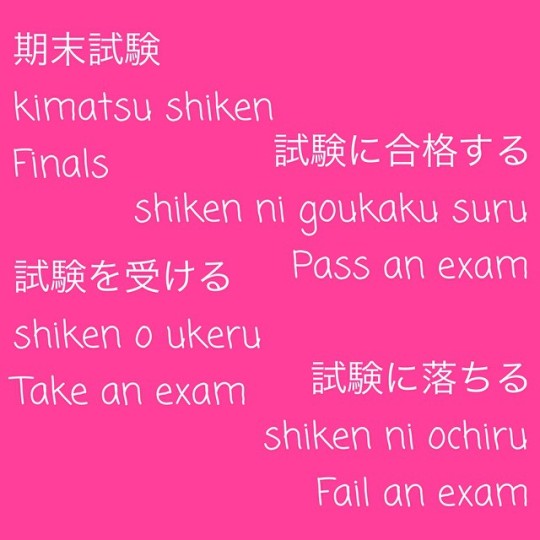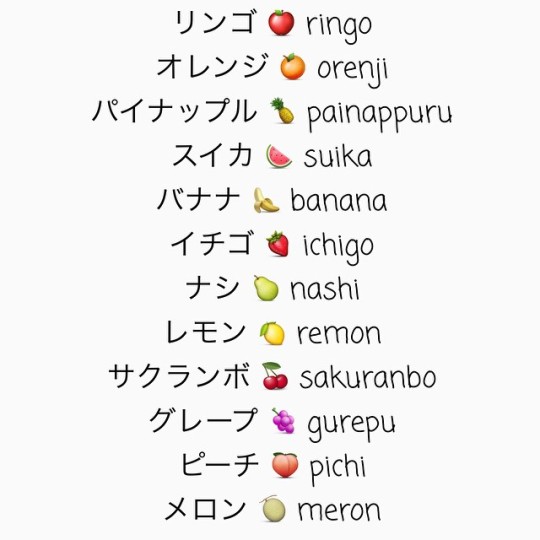⇢ Japanese Lessons ⇠ Everything from kanji to grammar to slang! ❢間違えたらごめん❢ 《16 year old American girl living in Florida (´・ω・`)》
Don't wanna be here? Send us removal request.
Photo
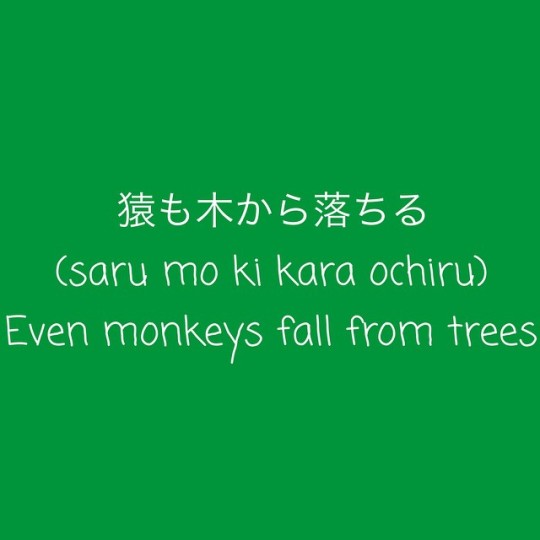
This is a Japanese saying that means that even the best can't be perfect. 猿 (saru) Monkey も (mo) Too, also, as well 木 (ki) Tree から (kara) From 落ちる (ochiru) Fall
78 notes
·
View notes
Photo
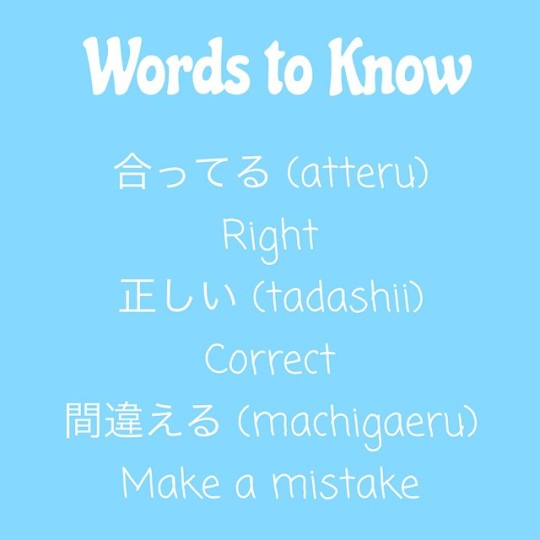
合ってる (atteru) is a verb that literally means "match", but, in this situation, it means "right, sounds right, makes sense, etc" 〜合ってる?/〜合ってない? (atteru/attenai) Is ~ right?/ Is ~ wrong? 正しい (tadashii) is an adjective that means "correct". It's used less often than 合ってる 〜は正しい?/〜は正しくない? (wa tadashii/wa tadashikunai) Is ~ correct?/ Is ~ incorrect? 間違える (machigaeru) is a verb that means "make a mistake" or "mess up", often used with typos. 間違えた?/間違えなかった? (machigaeta/machigaenakatta) Did I make a mistake?/ Did I not make a mistake?
81 notes
·
View notes
Photo
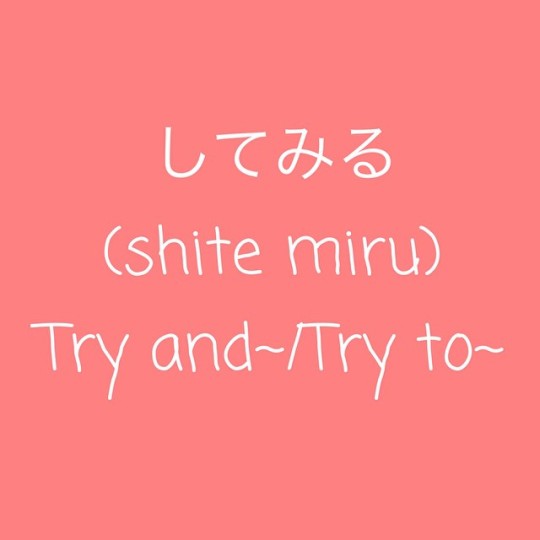
When you put the て/command form of a verb with "みる", it has a feeling of "try and do something". However, this is more of a feeling of trying to do something rather than literally "trying to do something", so keep that in mind! There are a lot of videos and live broadcasts in Japan with this type of verb, the most popular being "歌ってみた" (utatte mita/tried to sing), "踊ってみた" (odotte mita/tried to dance), and "描いてみた" (kaite mita/tried to draw). It probably sounds odd when translated in English, but it actually makes sense. In English, we call these videos things like "~ dance cover", "Let's draw with~", "~sings", etc., even though all these videos are are just people trying and doing things. Example sentences: これちょっと食べてみて!(kore chotto tabete mite) Try (and eat) this! 彼と喋ってみて (kare to shabette mite) Try and talk to him 今日は料理やってみたいと思う (kyou wa ryouri yatte mitai to omou) (I think) I wanna try and cook today However, this structure can also just be translated as a normal sentence. (Eat this, talk to him, I wanna cook, etc)
51 notes
·
View notes
Photo
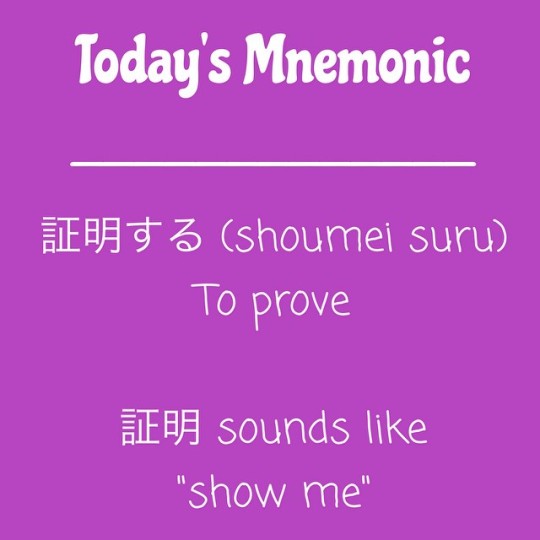
証明 = Proof, Evidence, etc. 証明して!(shoumei shite) Prove it!
56 notes
·
View notes
Photo
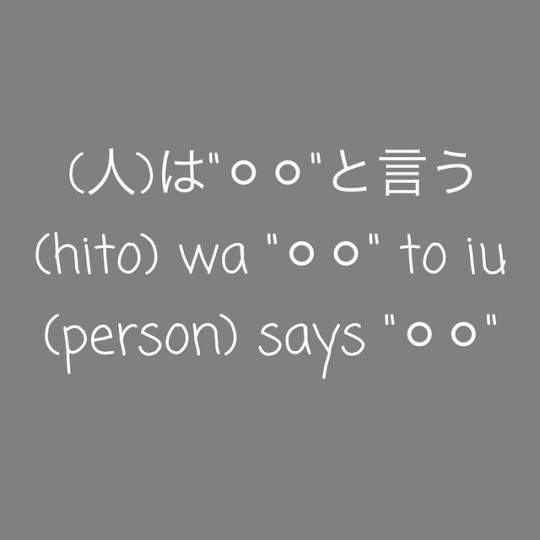
Dialouge is an important thing to understand in Japanese. It's fairly easy to say if you can remember the sentence structure (subject-object-verb). The simplest way to do this is; ① Say who's talking, followed by "は" (subject marker) ② Say what they said (what you'd put in quotes) ③ End it with "と" and whatever tense of "言う" (say) you need. So, for example→ 「I said "what are you eating?"」 I = 私 "What are you eating?" = 何食べるの? Said = 言った So, 「I said "what are you eating?"」can be said as「私は"何食べるの?"と言った」(watashi wa "nani taberu no?" to itta) There other ways to say this, but this is a basic structure to start with!
74 notes
·
View notes
Photo
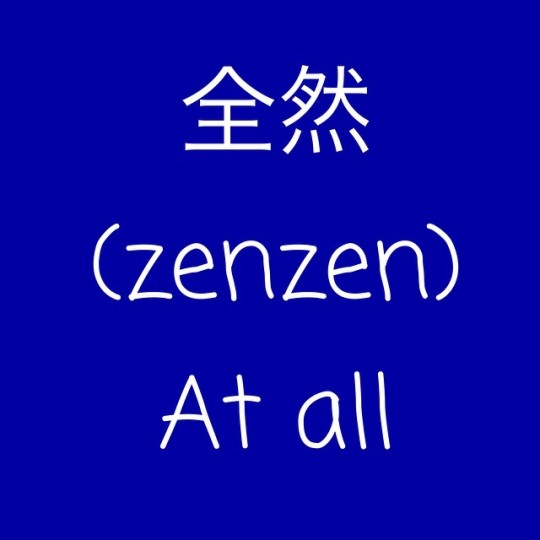
When used with a negative (like in English), "全然" means "at all" as in "not at all" or "I can't do it at all". Make sure to put "全然" before the verb! Examples: 全然見えない (zenzen mienai) I can't see (it) at all 全然食べたくない (zenzen tabetakunai) I don't wanna eat (it) at all 英語全然話せない (eigo zenzen hanasenai) I can't speak English at all 全然心配しない (zenzen shinpai shinai) I'm not worried at all その映画全然聞こえなかった (sono eiga zenzen kikoenakatta) I couldn't hear that movie at all
59 notes
·
View notes
Photo
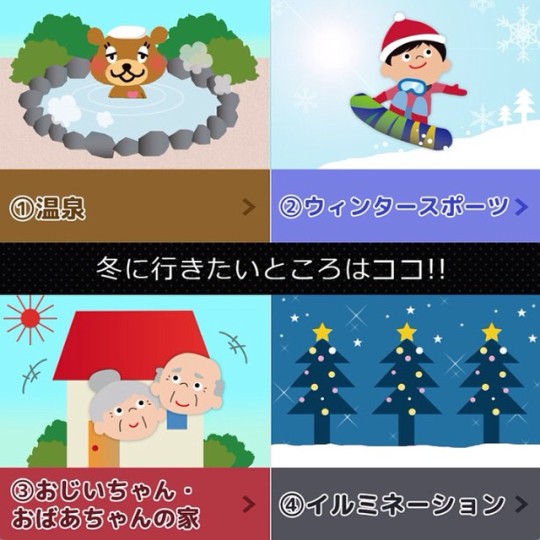
冬 (fuyu) Winter に (ni) In 行きたい (ikitai) Want to go (from "行く" [iku/to go]) ところ (tokoro) Place は (wa) Subject marker ココ (koko) Here (usually spelled in hiragana) 冬に行きたいところはココ! The place you wanna go in winter is here!/This is the place where you wanna go in winter! ① 温泉 (onsen) Hot springs ② ウィンタースポーツ (wintaa supootsu) Winter sports ③ おじいちゃん•おばあちゃんの家 (ojiichan obaachan no ie) Grandpa (and) Grandma's house ④ イルミネーション (irumineeshon) Lights
27 notes
·
View notes
Photo

This is a simple sentence structure that just explains that one thing does or doesn't have another thing. If the thing they don't have is living, use "いない"or "いる" and, if it's nonliving, use "ない" or "ある". Examples: 私はお金がない (watashi wa okane ga nai) I don't have (any) money 彼は彼女がいない (kare wa kanojo ga inai) He doesn't have a girlfriend このゲームはいいグラフィックスがある (kono gemu wa ii gurafikkusu ga aru) This game has good graphics おばあさんは犬がいる (obaasan wa inu ga iru) Grandma has a dog/dogs
40 notes
·
View notes
Photo
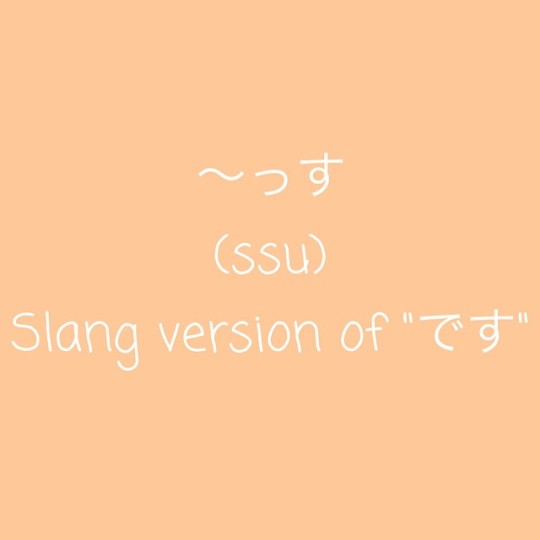
When you say "です" quickly or unclearly, it sounds like "っす", therefore, this became a slangy way of saying "です". Examples: いいっすよ!(ii ssu yo) That's good!/That's ok! 彼女可愛いっすね (kanojo kawaii ssu ne) She's cute, huh? よくわかんないっす (yoku wakannai ssu) I don't really understand NOTE: It sounds more like "ss", especially when by itself. So, "っすよ" can be anything from "ssuyo" to "ssyo", but just "っす" will usually sound like "ss".
76 notes
·
View notes
Photo

そう is similar to "so" (as in "I think SO"), みたい means "looks like"/"seems like", and ね is similar to "right?"/"huh?". Literally, it means something like "It seems so, huh?". This is used after someone said something that you agree with but you don't know is true. Example: A. 彼は悲しいの?(kare wa kanashii no?) Is he sad? B. そうみたいね… (sou mitai ne...) I guess so... A. あそこに行って危なそう!(asoko ni itte abunasou!) It seems dangerous to go over there! B. うん、そうみたいね!(sou mitai ne!) Yeah, it seems so!
52 notes
·
View notes
Photo
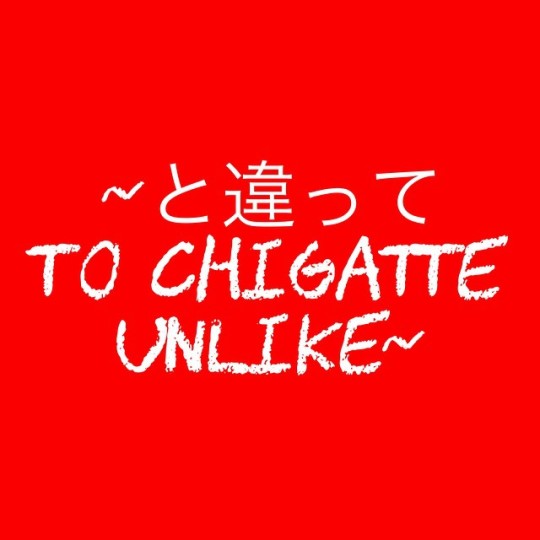
違ってる (chigatteru) means to differ, so "〜と違って" directly means something like "differring from~". Example: あなたと違ってこれは大切だと思う (anata to chigatte kore wa taisetsu da to omou) Unlike you, I think this is important 私と違って彼はニューヨークに行ったことない (watashi to chigatte kare wa nyuyoku ni itta koto nai) Unlike me, he's never been to New York
29 notes
·
View notes
Photo
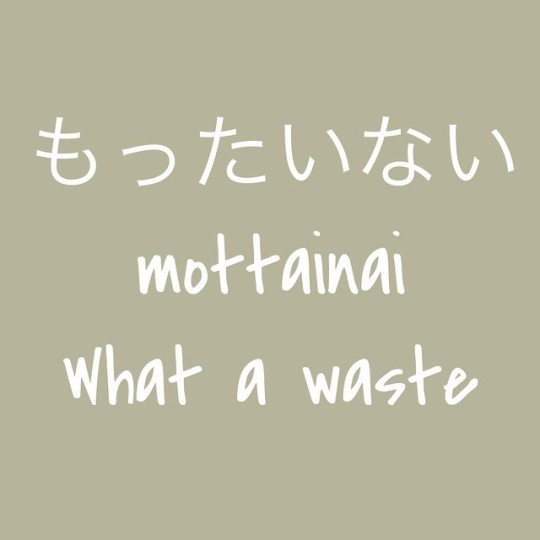
Example uses for "もったいない": A. 英語話せるけどアメリカ人会いたくない (eigo hanaseru kedo amerikajin aitakunai) I can speak English, but I don't wanna meet any Americans B. もったいないよ!(mottainai yo) What a waste! A. あ…もう食べれないよ… (a...mou taberenai yo...) Ah...I can't eat any more... B. 捨てるな!本当にもったいないなぁ (suteru na! hontou ni mottainai naa) Don't throw it away! That's such a waste
50 notes
·
View notes
Photo
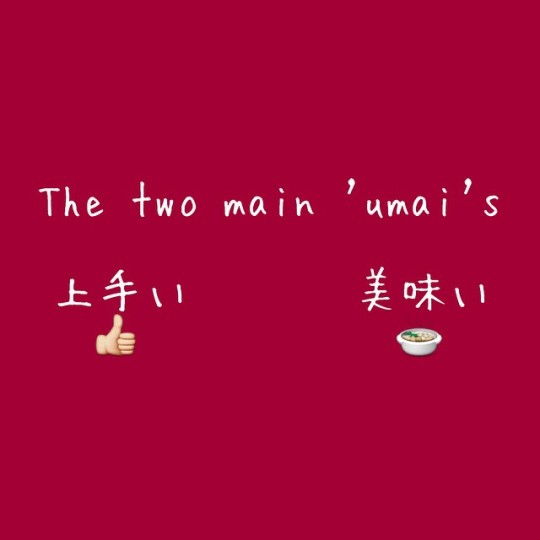
The first "umai" is "上手い", which usually means "good at". For example, if you saw someone flipping pancakes like a professional chef, you could simply say "上手いね!" (umai ne/you're good at that). The kanji are "上" (ue/up) and "手" (te/hand), so you could think about it like someone having the "upper hand" in something. Next is "美味い", which means "good" as in flavor (similar to 美味しい/oishii !). For example, if you ate the pancakes that the person 上手く作った (umaku tsukutta/made well) and they taste good, you can say "すごい美味いだ!" (sugoi umai da/they taste so good). The kanji are "美" (mi/beauty) and "味" (aji/taste, flavor), so you can think about it as "beautiful flavor". Like most commonly used words, both of these are often written in hiragana (such as the popular snack "うまい棒"). Be careful when considering which "umai" it is!
38 notes
·
View notes
Photo
I mean the "box" part of certain characters ^^
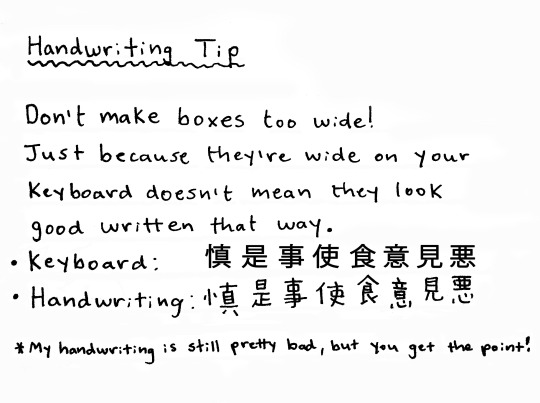
462 notes
·
View notes
Photo
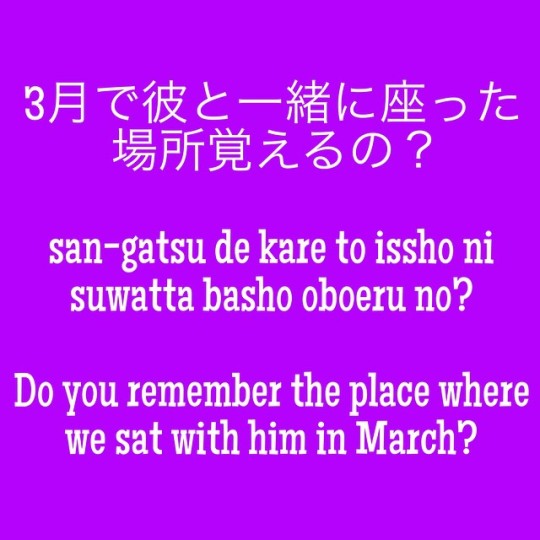
Here is an example sentence for particle and sentence construction practice ^^ Japanese generally goes from biggest idea to smallest idea (putting last names before first, writing the date in year, month, day order, etc), so, first, think about sentence structure; subject-object-verb. Subject: You (we will omit it because it contextual) Object: the place where we sat with him in March Verb: remember In "the place where we sat with him in March", you also sort of break it up into SOV, so "in March" is first, then "with him", then "place where (we) sat". "In March" is simply "3月で" (san-gatsu de), or "in the 3rd month", because months in Japanese are just counted instead of being given names. "With him" is "彼と一緒に" (kare to issho ni), which is actually more like "together with him". "Place where (we) sat" is "座った場所" (suwatta basho), literally "sat place", but when you put a noun directly after a verb, it means "the thing that ~ does", in this case "the place where we (intended) sat". Lastly, we put the verb, which is "remember"/覚える (oboeru). Because this is a question, we simply put the question particle "の" (no) after "覚える". Without the "の", the sentence can be turned into the statement "I remember the place where we sat with him in March" because, as a question, it's intended that you're referring to who you're asking (you), and, as a statement, it's intended that you're talking about yourself (I).
39 notes
·
View notes
